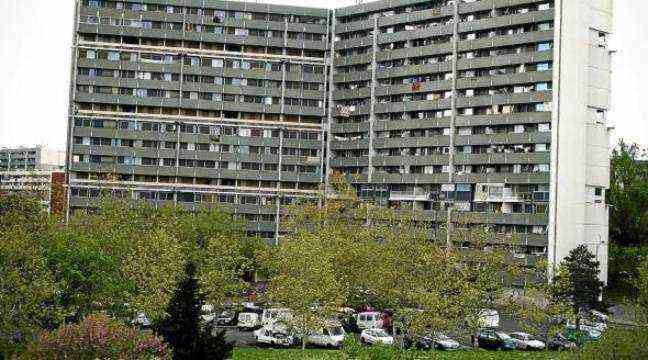“It’s not the buildings that are the problems.” Jean-Louis has lived for more than forty years in The Reynerie, in the heart of the popular district of Mirail. And don’t count on it to fuel the debate on the large inhuman complexes, the immense bars that make the landscape ugly. It is attached to the banks of the lake, to the tree-lined paths, but also to the “vast through apartments without vis-à-vis” imagined at the end of the 1960s by the architect
Candilis and his team.
“I’m not saying that everything is fine but it is not by demolishing everything that we will solve social difficulties, considers the Toulousain. They did it not far away in Bellefontaine and the deal hasn’t disappeared. The sexagenarian is part of the assembly of inhabitants who signed a call for a moratorium on the demolition of the Candilis buildings.
Five Candilis buildings destroyed, eight others rehabilitated
At La Reynerie, five of these famous buildings are now affected by the urban renewal project, which has been reworked several times over the past decade: the Gluck, Poulenc Grand d’Indy, Cambert and Messager residences. Mandated by the metropolis, social landlords have long since started relocating tenants, to the great displeasure of Jean-Louis who has seen “old people, a little lost, leave for other cities”. Karine Bellemare is still there. The apartment she lives in in Messager was bought by her mother in 1977. Of the 85 co-owners of this 260-unit bar, there are only 25 left to resist the sirens of what she calls “the aggressive management of the redemption”. The one who recently appeared on a citizen list at the Departmental to make her voice heard considers that “the neighborhood is quite airy”. Above all, she finds that it is “an aberration to spend a billion euros to demolish 971 dwellings that we can rehabilitate and rebuild 981”.
Gaëtan Cognard, the district mayor and elected official in charge of City Policy, does not sum up the file in exactly the same way. He recalls that while five Candilis buildings are slated for demolition – including Gluck in less than a year – eight others, also original, will be rehabilitated. “The project, which aims to improve the living environment, also includes the renovation of the nautical base at the foot of the castle and the embellishment of Place Abbal”, he specifies. The municipal councilor finally explains that for the rehousing the instruction was given to “do in the lace, with very particular attention to the most fragile”. As proof that the operation is working, he points out that 50 families from Gluck have agreed to leave in the space of 9 months and that there are only around 40 left out of 208. A moratorium? “The consultation has already been done. There is no subject”, declares Gaëtan Cognard who unearthed an archive of the INA of 1992 where Candilis in person concedes to a journalist that his project was “excessive”.
The only apartments “that resisted the AZF explosion in the neighborhood”.
But on the spot, the debate does not agitate only nostalgic inhabitants or refractory co-owners. A collective of architects has joined the revolt and cries sacrilege. “We must save all the Candilis buildings! How can such urban intelligence be thrown overboard? exclaims Jean-Pierre Sirven. With his fellow signatories, he admires these Y-shaped buildings, these soundproof apartments with loggias powered by district heating, “the only ones in the neighborhood that resisted the AZF explosion”. For them, in times when we are talking about sustainable development, these buildings and “these accommodations of incredible quality are completely rehabilitable”. “It takes a big debate, a big competition of town planners to imagine a really beautiful district”, launches the architect Michel Retbi. Men of the art are convinced that the resurrection of Candilis could be a “great urban coup for Toulouse”.

